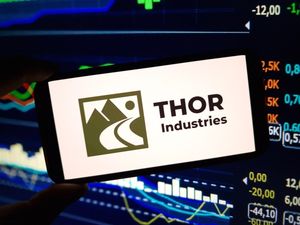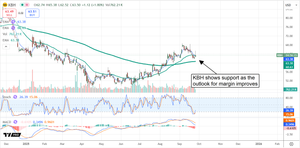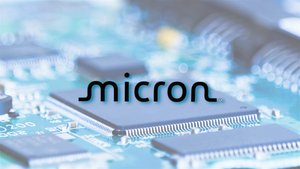
Delhi's precious metals market witnessed a historic moment on Thursday, September 25, 2025, as silver prices soared to an unprecedented Rs 1.40 lakh per kilogram, marking an all-time high. This remarkable surge, fueled by robust global trends and burgeoning industrial demand, paints a stark contrast to gold's more subdued performance, which experienced mixed movements and a noticeable decline in local retail interest. The record-breaking ascent of the white metal signals a significant shift in the precious metals landscape, with silver's dual role as both an investment and an industrial commodity driving its exceptional momentum, while gold grapples with the challenges of elevated prices impacting consumer purchasing power.
This monumental rally for silver, which has seen its prices outperform gold with gains exceeding 11% in September 2025 alone, underscores a burgeoning confidence in its intrinsic value and diverse applications. The implications are far-reaching, affecting investors, industrial consumers, and the broader economy, as market participants recalibrate their strategies in response to this historic divergence in precious metal trends.
Silver's Unprecedented Ascent: A Deep Dive into the Rally
Silver's journey to Rs 1.40 lakh per kilogram on September 25, 2025, was not an overnight phenomenon but the culmination of several powerful forces converging to propel its value. The white metal had already touched and maintained this level since September 23, indicating sustained upward pressure. This latest peak represents a Rs 1,000 increase from the previous day's closing price, solidifying its position at the forefront of the precious metals market.
Globally, spot silver prices mirrored this enthusiasm, climbing over 2% to reach $45.03 per ounce, a figure hovering near a 14-year high. This international fervor translated directly into domestic gains, with silver futures contracts for December and March 2026 also scaling unprecedented heights on the Multi Commodity Exchange (MCX). A significant catalyst for this global bullish sentiment is the prevailing expectation of a dovish stance from the US Federal Reserve, with anticipated rate cuts and further easing into late 2025. Such a monetary policy outlook tends to inject strong liquidity into bullion markets, providing a fertile ground for precious metals like silver to thrive. Moreover, persistent global uncertainties and a gradual reduction in the world's reliance on the US dollar have further bolstered buying interest in safe-haven assets, with silver benefiting immensely. Beyond its traditional role as a store of value, silver's burgeoning industrial demand has emerged as a crucial driver. Sectors such as solar panel manufacturing, electric vehicles, 5G infrastructure, and battery storage are experiencing double-digit growth rates in silver consumption. For instance, silver's share of module cost in solar panels has tripled in just two years, creating a tight physical market. This robust industrial appetite, coupled with stagnant mine production concentrated in a few regions, has created a supply-demand imbalance that continues to underpin silver's upward trajectory.
In stark contrast, gold's performance during this period has been a mixed bag, primarily characterized by a significant slip in local retail demand. In Delhi, gold of 99.9% purity saw a decline of Rs 630, settling at Rs 1,17,370 per 10 grams, while 99.5% purity gold also dropped by Rs 700. This downturn in retail buying comes despite an earlier strong rally in early September, where 24-carat gold prices had skyrocketed by Rs 45,200 per 100 grams since September 19th before a pullback on September 24th. The primary culprit for this subdued retail interest is the prohibitive record-high prices of gold. Consumers, operating on fixed budgets, are finding it increasingly challenging to keep pace with the soaring costs, leading to a noticeable dampening of jewelry purchases. This impact is particularly evident in lower-ticket, daily-wear, and discretionary buying, with some consumers opting for lower carat products as a more affordable alternative. The World Gold Council has even revised its 2025 projection for India's gold demand downwards, directly attributing this to the adverse effect of high prices on jewelry sales. While some investment demand has picked up, driven by the festive season and safe-haven buying amidst international trade concerns, the overall retail demand for physical gold, especially for jewelry, remains weak, highlighting a significant divergence in consumer sentiment between the two precious metals.
Market Movers: Companies Poised to Win and Lose
The seismic shifts in the precious metals market, particularly silver's meteoric rise and gold's struggle with retail demand, will undoubtedly create winners and losers among public companies. Businesses directly involved in the mining, refining, and distribution of these metals, as well as those in industries heavily reliant on silver, are on the cusp of significant impacts.
Mining companies with substantial silver reserves are poised for considerable gains. Companies like Pan American Silver Corp. (NASDAQ: PAAS) and Fresnillo Plc. (LSE: FRES) stand to benefit immensely from the elevated prices. Higher per-ounce realizations for silver will translate into increased revenues and potentially fatter profit margins, bolstering their financial performance. Similarly, diversified miners with significant silver by-product output, such as BHP Group (ASX: BHP), could see an unexpected boost to their bottom lines. These companies may accelerate exploration and production efforts in their silver-rich assets, further capitalizing on the favorable market conditions. The increased demand for silver in industrial applications also presents a boon for refiners and suppliers of industrial-grade silver. Companies involved in the manufacturing of solar panels, electric vehicles, and 5G components, such as First Solar, Inc. (NASDAQ: FSLR) or Tesla, Inc. (NASDAQ: TSLA), while not primarily silver producers, will face higher input costs. However, the overall growth in these sectors, driven by global sustainability and technological advancements, suggests that the demand for silver will continue to be robust, potentially leading to long-term contracts and stable supply chains, albeit at a higher cost base.
Conversely, traditional gold jewelers and retailers, particularly those catering to the mass market in India, are likely to face headwinds. Companies like Titan Company Limited (NSE: TITAN) and other major jewelry chains, heavily reliant on gold sales, will continue to feel the pinch of weak retail demand due to sky-high prices. While they might attempt to mitigate this by promoting lower-carat gold jewelry or diversifying into silver and diamond offerings, the immediate impact on their core gold business could be substantial. This could lead to lower sales volumes, inventory challenges, and potentially reduced profitability. Furthermore, investment firms and funds with a heavy allocation to gold, without sufficient hedging or diversification into other precious metals, might see their returns dampened if gold's price appreciation lags behind silver or if retail demand continues to slump. These entities might need to re-evaluate their portfolio strategies, potentially increasing their exposure to silver or other industrial metals to capitalize on current market trends. The divergence in performance also highlights a challenge for companies that have traditionally relied on gold as a primary safe-haven asset, as investor attention might increasingly shift towards silver's dual appeal.
Wider Significance: A Shifting Paradigm in Precious Metals
Silver's record-breaking rally and gold's contrasting performance signify more than just price fluctuations; they point to a potential paradigm shift in the precious metals market with broader industry implications. This event fits squarely into an overarching trend where industrial demand is increasingly playing a pivotal role in the valuation of certain commodities, moving beyond their traditional roles as mere stores of value.
The surge in silver prices is a testament to the accelerating global transition towards green energy and advanced technology. As nations commit to decarbonization and digital transformation, the demand for critical materials like silver—essential for solar panels, electric vehicles, and 5G networks—is set to intensify. This sustained industrial appetite provides a fundamental floor for silver prices that gold, primarily a monetary metal, lacks to the same extent. The ripple effects of this trend are significant. Competitors in the industrial metals space might see increased investor interest as the market recognizes the strategic importance of materials integral to future technologies. Partners in the supply chain, from mining and refining to manufacturing, will need to adapt to potentially higher input costs and ensure robust supply chains to meet the escalating demand. Regulatory or policy implications could also emerge, with governments potentially looking at strategic reserves of critical industrial metals like silver or incentivizing domestic production to secure supplies. Historically, periods of strong industrial growth have often coincided with increased demand and value for industrial metals. This current rally in silver can be compared to past booms in commodities driven by infrastructure development or technological revolutions, suggesting a long-term structural shift rather than a fleeting speculative bubble. The increasing recognition of silver as a "green metal" or "future metal" is attracting a new class of investors and end-users, further solidifying its market position.
What Comes Next: Navigating the Evolving Precious Metals Landscape
Looking ahead, the precious metals market, particularly the dynamics between silver and gold, is poised for continued evolution. In the short term, silver's momentum is likely to persist, driven by ongoing industrial demand and a dovish global monetary policy outlook. However, its rapid ascent could also trigger profit-taking, leading to some price volatility. For gold, the immediate challenge lies in rekindling retail demand. A sustained period of price stability or a slight correction could make it more attractive to consumers.
In the long term, several possibilities emerge. Silver could solidify its position as a "strategic metal," with its price movements increasingly dictated by industrial applications rather than solely by investment demand. This could lead to greater price stability and less susceptibility to purely speculative swings. Gold, while retaining its safe-haven appeal, might see its growth trajectory become more closely tied to global economic uncertainties and geopolitical risks, rather than everyday consumer purchases. Potential strategic pivots for companies include increased investment in silver mining and refining capabilities, as well as a greater focus on recycling silver from electronic waste to supplement primary production. Jewelers might need to innovate their product offerings, perhaps emphasizing unique designs or promoting silver and platinum jewelry more aggressively to cater to evolving consumer preferences. Market opportunities could arise in the development of new technologies that optimize silver usage, or in financial products that allow investors to gain exposure to silver's industrial growth story. Challenges include managing supply chain disruptions, mitigating price volatility for industrial users, and adapting to potential regulatory changes aimed at ensuring a stable supply of critical minerals. Potential scenarios range from silver continuing its upward trajectory, possibly even challenging gold's traditional dominance in terms of percentage gains, to a more balanced market where both metals find their equilibrium based on their distinct demand drivers. Investors should closely monitor global economic indicators, central bank policies, and technological advancements to gauge the future direction of these precious metals.
Wrap-Up: Silver's Ascendance and the Future of Precious Metals
Silver's record-breaking rally to Rs 1.40 lakh/kg in Delhi on September 25, 2025, marks a pivotal moment in the precious metals market. The key takeaway is the dramatic divergence in performance between silver and gold, largely driven by silver's burgeoning industrial demand in sectors like solar, EVs, and 5G, coupled with strong global cues and a dovish Federal Reserve outlook. Gold, while retaining its safe-haven status, is grappling with weak retail demand due to its prohibitive record-high prices, underscoring a shift in consumer behavior and market dynamics.
Moving forward, the market is likely to witness continued strength in silver, propelled by its indispensable role in the green energy transition and technological advancements. This ascent positions silver not just as a precious metal, but as a critical industrial commodity. Gold, on the other hand, faces the challenge of re-engaging retail consumers and may see its price movements more closely tied to broader macroeconomic uncertainties. The lasting impact of this event will likely be a re-evaluation of investment portfolios, with increased attention on silver's growth potential. Companies in the mining, refining, and industrial sectors will need to adapt to these evolving dynamics, potentially shifting focus and investment towards silver-rich opportunities. Investors should closely watch for sustained industrial demand for silver, any shifts in central bank monetary policies, and the effectiveness of strategies employed by gold retailers to revive consumer interest. The narrative of precious metals is clearly undergoing a transformation, with silver emerging as a formidable contender for investor attention and industrial utility.
This content is intended for informational purposes only and is not financial advice


















